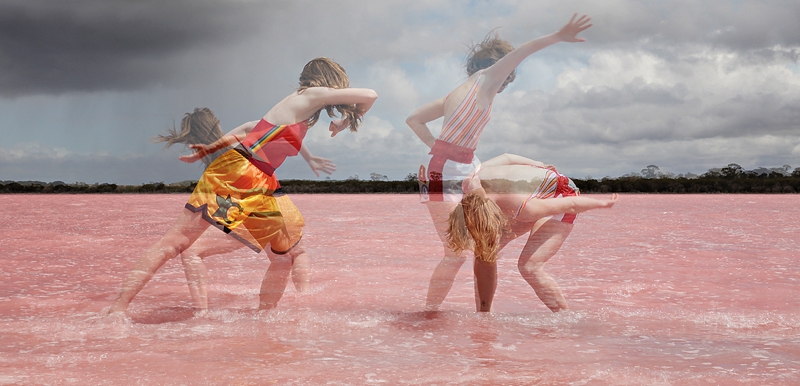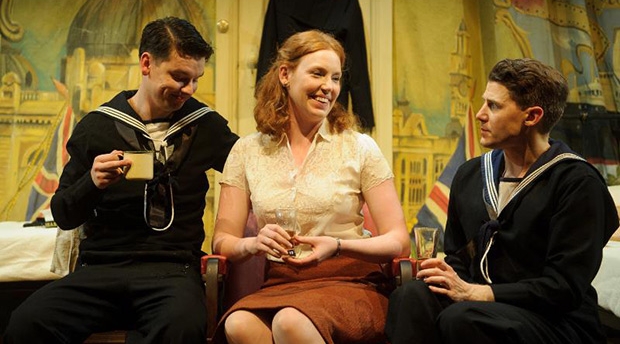Rebecca Jensen and Sarah Aiken have created an event rather than a performance. It’s quite some journey. We enter the space to see the four dancers (Aiken, Jensen, Rachel Coulson and Janine Proost) prone, representing the elements of earth, air, fire and water in a pagan pentagram on the floor made up of clothes and accessories. The young women are dressed in semi translucent shorts and tops, looking like cheerleaders, like debutantes, and strangely almost as though they’re about to receive confirmation. In the west a white dress on a girl speaks of innocence. The dancers could also be tennis players, they’re wearing runners and their first movements involve a prolonged slow jogging.
After a segment involving much repetitive posing and posturing which reads as a comment on the creation of modern femininity, the dancers guide the audience into queues according to their star signs, and there’s a personal interaction between each audience member and a performer. The young women then invite the groups to dress them up. This is all fun; the dancers then play around with each other in a bacchanalian horse-play girlie pillow fight type of romp which starts off as funny then becomes increasingly dangerous as one performer becomes a victim. They’ve recorded it on their phones, referencing cyber bullying and slut shaming, and the audience is given time, more than enough, to contemplate what they’ve been laughing at. A long ritualistic guided meditation follows.
All up, OVERWORLD is a bold and original happening, less about dance than an examination of the west’s culture of girliness and instant consumerism and gratification. You’re never sure just how seriously you’re meant to take the goings on in OVERWORLD; the strength of this work is the creation of this ambivalence, the tension between an elevated yet innocent and pedestrian approach to the unnamable. As an audience member you participate in OVERWORLD in a way that is fun yet confronting at the same time (but mostly fun). It pokes fun at ’90s style spiritual trends, goddess worship and the like, all of which certainly now seems silly. The work comments eloquently on ‘spirituality-lite’, on our reduction of the human quest for the awe-inspiring and the sublime to commodity. We live in a world where young women can style themselves as goddesses and princesses but reality tells a different story.
BY LIZA DEZFOULI

